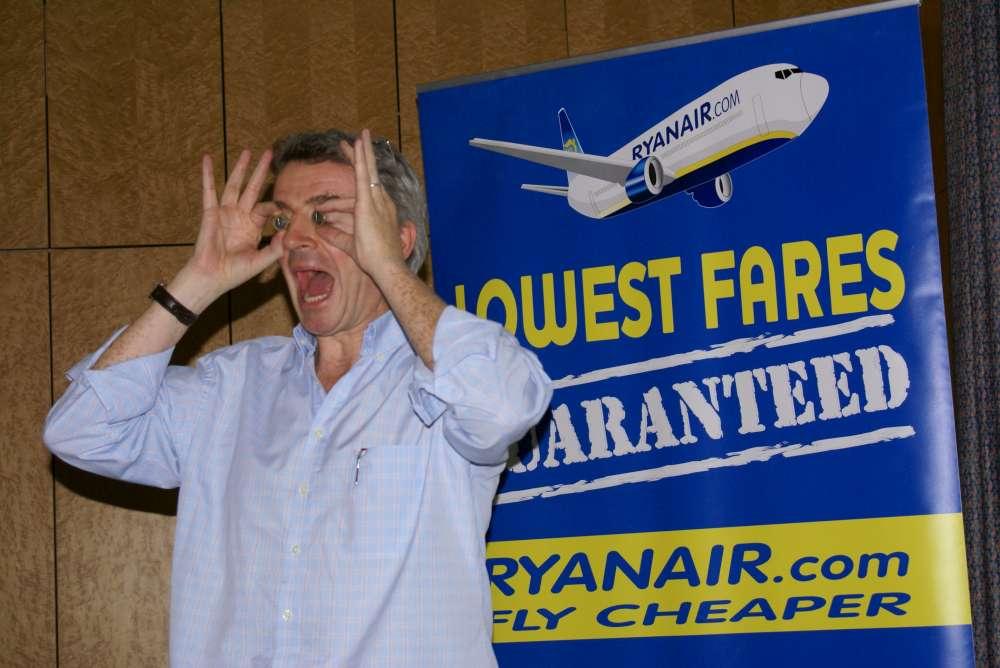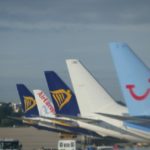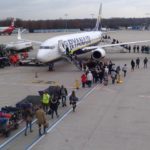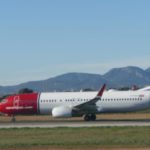RYANAIR REPORTS H1 PROFITS UP 1% TO €602M, TRAFFIC AND LOAD FACTORS RISE ON LOWER FARES
Dublin/Frankfurt – Ryanair, Europe’s favourite low fares airline today (Nov 4) reported that H1 profits rose by 1% to €602m, as its traffic grew 2% to 49m passengers. Revenue per passenger increased 2% due to a 22% rise in ancillary revenues. Unit costs rose 3% largely due to a 7% increase in fuel prices. Average fares fell by 2% during the half year, and have continued to fall this winter, which will lead to a reduction in Ryanair’s full year profit guidance from €570m to approx. €510m.
|
H1 Results (IFRS) |
Sept 30, 2012 |
Sept 30, 2013 |
% Change |
|
Passengers(m) |
48m |
49m |
+ 2% |
|
Revenue(m) |
€3,106m |
€3,255m |
+5% |
|
Profit after Tax(m) |
€596m |
€602m |
+1% |
|
Basic EPS(euro cent) |
41.34 |
42.04 |
+2% |
Ryanair’s CEO, Michael O’Leary, said:
We are pleased to report slightly increased H1 profits, particularly against a backdrop of softer fares this summer. Yields in Q3 have softened, which is good news for our customers and has led to strong growth in traffic (up 6% in Oct) and load factors (up 1%). The highlights of the half year include:
- Record H1 profit of €602m, in line with previous guidance.
- Traffic up 2% to 49m (load factor up 1% to 85%).
- Seven new bases and 116 new routes opened
- 175 new aircraft order agreed with Boeing.
- New 10 year growth deals at London (STN) and Warsaw (MOD) airports.
- Irish travel tax €3 scrapped from April 2014.
- €177m share buyback completed, H1 cash of €3.5bn.
The 2% fall in fares during H1 was impacted by one off events such as the timing of Easter (not in Q1), the summer heat wave in northern Europe, French ATC strikes in June, and weaker sterling. Ryanair has responded to these market conditions by stimulating traffic growth with aggressive fare promotions. This will lay the foundation for traffic growth over the coming years, particularly as our new 175 aircraft deliver from September 2014. While fares are falling, ancillary revenues grew strongly by 22% to €713m, driven by the successful roll out of reserved seating, priority boarding and higher credit/debit card fees.
Unit costs in H1 rose 3% mainly due to a 7% increase in fuel costs. Excluding fuel, sector length adjusted unit costs fell by 2% as we continued to deliver cost efficiencies, despite higher Eurocontrol charges and the impact of a 2% pay increase from April last.
1. Growth – New Routes and Bases
Our new routes and bases performed well this summer, albeit at weaker yields. With only 9 (net) additional aircraft, we still managed to grow our H1 traffic by 2%, thanks to a load factor increase of 1%. High cost competitor airlines are continuing to cut capacity in major markets such as France, Germany, Poland, Spain and Italy and this continues to create growth opportunities for Ryanair. With our 175 new aircraft order, our new 10 year growth deals at London (STN) and Warsaw (MOD) airports, and the Irish Govt’s recent decision to scrap the €3 travel tax from April 2014, Ryanair is well positioned to return to strong and profitable traffic growth from September 2014 onwards.
2. Digital Marketing and Customer Service
After 20 consecutive years of rapid growth, the next 12 months will see a brief pause in traffic growth, along with stable load factors. We intend to use this period to further improve our industry leading customer service. Over recent weeks we have announced a series of customer service initiatives including scrapping the Recaptcha security feature, allowing a small second carry-on bag, “quiet flights” before 8am and after 9pm, a 24 hour “grace period” to allow passengers correct minor booking errors, and significantly reduced boarding card reissue and standard bag fees. These customer service initiatives have been widely welcomed and generated very positive feedback from our growing customer base.
We have also announced a programme of significant upgrades to our website and digital platforms including a simpler website homepage, an improved booking path reducing (from 17 to 5) the clicks required to make a booking, and a new “My Ryanair” member service which allows customers to register their name, address and credit card details just once. Early next year we will roll out mobile boarding passes, a “Share the Fare” option, a “Fare Finder” feature which will enable our customers to find dates and flights where these lowest fares are available, a new mobile app for smartphones and tablets, and in June 2014 new bespoke language websites in all Ryanair’s major EU markets starting with Spain and Italy.
3. Allocated Seating
Ryanair is pleased to announce in today’s results that it will from 1 Feb 2014 move to fully allocated seating on all Ryanair flights, making the boarding process smoother, and enabling families or other groups to ensure that they sit together. Passengers will still be able to choose our popular reserved seating service (select front row or over-wing seats), or alternatively select seats elsewhere on the aircraft, as long as they check-in more than 24 hours prior to the date of departure. All passengers who don’t wish to pay a small fee (€5) to select their preferred seats will be allocated seats during the 24 hours prior to the date of scheduled departure. This return to allocated seating is Ryanair’s response to the enormous demand from our customers in recent weeks via Ryanair’s “Tell MOL” customer feedback initiative. Ryanair’s decision to launch fully allocated seating is also part of the airline’s commitment to listen to its customers, and improve its industry leading customer service which comprises Europe’s lowest air fares, most on-time flights, fewest lost bags, and fewest customer complaints.
4. Fuel
Ryanair remains 90% hedged for FY’14 at $980 per tonne (approx. $98 p.bl). We have taken advantage of recent weakness in oil prices and the US dollar to extend our FY15 hedges to 60% at approx. $94 p.bl. which at current market rates should deliver a unit cost fuel reduction of approx. 4% in FY15.
5. Balance Sheet
Ryanair’s balance sheet remains one of the strongest in the industry. Our fleet has been purchased at substantial discounts, which is a significant long term benefit for shareholders. Despite €177m of share buybacks during H1 (and a further €75m in Oct), gross cash at the end of Sept was over €3.5bn. We plan to execute at least €150m of further share buybacks before the end of FY14. In addition the airline’s commitment to return up to €600m to shareholders via share buybacks and special dividend before the end of FY15 remains unchanged. This will bring to over €2.4bn the amount of funds returned to shareholders since FY08.
6. Trading Update and Guidance Outlook
On September 4, Ryanair announced that it had noticed a perceptible dip in forward fares and yields into Q3 due to, (i) increased price competition, (ii) softer economic conditions in Europe and, (iii) the weaker Euro/Sterling exchange rate. We responded to this yield softness by lowering our FY14 traffic target from over 81.5m to just under 81m. We also released a range of lower fares and aggressive seat sales to stimulate traffic, load factors and bookings across all markets. The success of this strategy has been vindicated by our 6% rise in October traffic, and a 1% increase in load factors.
Market pricing remains weak, so we will continue to promote low fare seat sales throughout the remainder of both Q3 and Q4. Forward bookings are running slightly ahead of last year, but the softness in fares and yields continues. Based on reasonable visibility we expect Q3 fares to fall by 9%, and Q4 (albeit with zero visibility) to fall by up to 10% (without the benefit of Easter which will be in Q1 FY15). Our cost discipline will see sector length adjusted cost per passenger fall by 7% in H2. However the continuing fare and yield softness means that full year profits will be lower than previously guided (€570m to €600m). We now expect the full year outturn to be between €500m to €520m due entirely to this lower fare environment.






